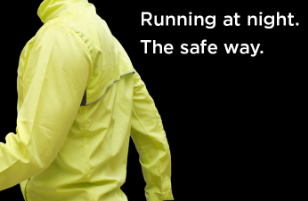-
Heading towards the holiday period…
- Posted onjofrancis
- in Website Articles
- onNovember 17, 2015
- No Comments.
It may be a little early to be thinking about this, but lets face it, as soon as Bonfire Night is out of the way, all thoughts turn towards Christmas…

That longed for holiday from school, college or work should mean extra free time to train, but somehow the festive break never turns out that way. Everybody’s schedule is packed with parties, visits to relatives and last-minute shopping. So if you’re serious about sticking to your training plan, you need to focus on short sessions you can squeeze in when time allows.
Here are our favourites:
Swim
30 minutes is an ideal amount of time to get in the pool and work on your pace. Warm up for 100-200 metres and then try this modified pyramid session aimed at increasing speed and endurance through interval training:
4x 50m building the pace throughout the 50m (15-20s rest between each)
2x 100m fast pace (15-20s rest between each)
2x 200m faster than race pace but sustainable (15-20s rest between each)
1 x 400m race pace
Bonus 60s rest
8 x 50m sprints (15-20s rest between each)
Cool down and then go home to watch a film that you’ve probably already seen before, happy in the knowledge you’ve worked harder than anyone else on the sofa!
Bike
With just 30 minutes to spare between “Home Alone” and “Elf”, we advise you turn to the trusty turbo. Warm up and then try this interval session which will boost fitness, cadence and calorie-burn:
4 minutes at a fast, but sustainable pace, cadence between 90-100 RPM
2 minutes easy spinning to recover
Repeat this for a total of 5 efforts, and then cool down.
Run
30 minutes sounds to us like the ideal length of time to do a 5km-pace training run. It might not take long but it will shock your body out of complacency, up the pace and inject a bit of speed into your next longer run.
Warm up for 5 minutes at a very easy pace. Then pick a 4-6km pre-planned route and time yourself, pushing hard all the way. Aim for 5km race pace. Note your time: you can use this route as a time-trial throughout the year. Cool down by jogging and walking for 5 minutes, and then stretch once you get inside.
Be seen whilst running: safety tips
The nights have suddenly drawn in and most of us will be doing our weekday running sessions in the dark. Give yourself a pat on the back for making it out the door! We know it’s not easy. How much thought do you give to safety when you run? Whether you run in a group, in pairs, with a club or alone, it’s really important to think about making yourself visible. Motorists and cyclists may not be expecting to see runners on your particular stretch of road. Don’t leave the responsibility in their hands: make yourself as visible as possible when you run.
Wear high-vis kit: a reflective tabard, bright gloves or hat with reflective patches or even a light (you can get ones made for runners and cyclists with white light to the front and red to the rear). Never, ever go out running in the dark wearing all black.
Seek out pavements: run on pavements wherever possible. We know you haven’t all got this luxury but, if you have, use them.
Run on the correct side of the road: did you know that you should always run “against” the traffic (ie on the right hand side of the road)? Well, you do now.
Don’t take risks: it sounds obvious, but don’t take silly risks when crossing roads, turning corners, using pedestrian crossings or running across driveways. It’s just not worth it. Always assume motorists haven’t seen you.
Wear athlete ID: we strongly advise you to carry some form of ID. Several companies make tags which you can put on shoelaces, in pockets or elsewhere about you whilst you run. Your name, next of kin and a telephone number could save your life.
Let people know your route: it makes sense to tell someone where you’re going, and roughly what time to expect you back. It’s polite, thoughtful and covers you in case of emergency.
Most of this is common sense, but we think it needs repeating. Don’t get complacent about running in the dark, even if you’ve been training for many years. Always assume motorists, cyclists and people using the pavement have not seen you. If they have, that’s a nice bonus. If they haven’t, the risk of anything happening to you is greatly reduced. After all, we want to keep you fit and healthy, ready for the 2016 race season!
If you enjoyed this article please consider sharing it!




